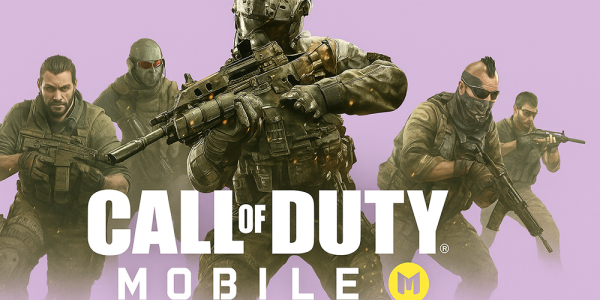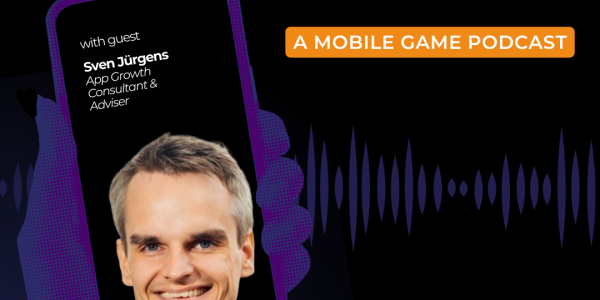UA Academy: Sebastian Lüdemann On Why Conversion Beats Keywords and Creative Dogma Kills Growth

Ahead of his panel at Gamesforum Hamburg, UA & Marketing Consultant, Sebastian Lüdemann, breaks down the strategies behind high-ROAS campaigns, scalable UA, and creative testing that actually moves the needle. From ASO priorities to post-IDFA attribution fixes, this is a no-fluff playbook for growth-minded teams.
Keyword rankings are nice, but conversion rates pay the bills — icons over index every time
I typically prioritise conversion optimisation over keyword optimisation. High-performing conversion rates signal strong product–market fit and unlock scalable user acquisition. While keyword visibility is important, intent-based search inherently limits scale — you're bound by search volume and keyword competitiveness. That’s why storefront testing should focus on impact-heavy and upper-funnel assets first: icons and feature graphics tend to drive the biggest lift, while the fifth screenshot often contributes the least. Keyword clouds, on the other hand, evolve more slowly and should be refined over time.
AppLovin’s tech turned solid strategy into standout results
One standout campaign ran on AppLovin, where we achieved exceptional blended ROAS with a 60/40 IAP/IAA revenue split, using AppLovin MAX for mediation. What made the biggest difference was AppLovin’s ad tech — we used similar targeting, events, and geos as on other networks, but performance peaked here. On the creative side, a well-balanced mix of UGC, gameplay, and playables helped drive strong engagement and conversion.
Signal loss is the new normal — adapt with blended ROAS, SKAN schemas, and a healthy dose of creative pragmatism
There are several ways to approach this, and most companies have found a semi-working model by now. The most basic method is optimizing toward blended ROAS — simple, but still effective. For more advanced setups, you can work with your data science team to design SKAN conversion value schemas, map them to ROAS forecasts, and optimize Meta or Google campaigns on iOS accordingly. Some ad networks offer fingerprinting-based attribution, which — while not privacy-compliant in all regions — can still deliver significant scale. Meta’s AEM is another example.
Marketing Mix Modeling can help with budget planning, though it's not precise enough for daily optimization. Finally, some rewarded UA partners offer mandatory ATT opt-in flows that allow for deterministic attribution and effective acquisition in the post-IDFA landscape.
Spend follows signal, not sentiment
The ultimate goal is profitable and scalable growth. Budget allocation should reflect the game’s readiness, market potential, and financial objectives. During soft launch, we focus on validating product–market fit and assessing whether the timing and market conditions are right for scale.
We typically start with self-managed platforms like Meta, Google Ads, Apple Search Ads, and TikTok — not only because of their reach, but also due to the control and transparency they offer. Early performance on these platforms is often the clearest signal of a game’s scalability.
The channel mix has shifted: where Meta once dominated spend (~70%), SDK networks like AppLovin and Unity now outperform, especially when IAA is a relevant revenue stream. Adding DSPs and rewarded UA partners helps diversify the mix and reduce risk.
For additional scale or niche targeting, we look beyond conventional sources — whether through the AppsFlyer Performance Index or by tapping into LinkedIn to discover emerging partners.
Optimising creatives on Facebook and Google requires platform-specific strategies, clear hypotheses, and relentless testing
Creative optimization starts with a channel-specific strategy tailored to both ad format and platform behavior. For each media source, define clear hypotheses based on player motivations, themes, or creative styles — whether it’s UGC, playables, or gameplay.
On Google, gameplay-first assets still perform best. A strong campaign structure uses ad groups organized by theme or motivations. Within each group, vary this one key element while keeping others constant. Let performance identify your strongest angles, then double down on what works.
On AppLovin, scale is driven by volume and automation. Upload a wide range of creatives — UGCs, gameplay, playables — and let the algorithm optimise toward your ROAS target. Use CPPs or CSLs to further expand reach through multiple asset combinations.
Facebook is more challenging due to its creative lock-in effect — evergreen ads dominate despite of dropping performance, making it hard for new creatives to gain share of voice. Your testing strategy should tackle two tasks:
- Identify high-performing new creatives using test campaigns (MAI, AEO, or VO, depending on your KPIs). Meta’s Ad Impression Testing offers a good balance of volume and control.
- Ensure you’re collecting strong signals — especially IAP ones — so winning creatives from test campaigns get enough support to scale in performance campaigns.
Brand positioning starts with one clear promise shared across teams
Many mid-sized studios still undervalue the role of product marketing in establishing and maintaining product–market fit. From a UA perspective, it can be tempting to chase short-term wins by following “whatever works.” But without a clear, consistent brand position, product and marketing teams often follow different visions — and alignment breaks down.
Most experienced UA managers have seen projects struggle or fail due to misalignment between product design, UA creatives, and audience expectations. When product–market fit is missing, it’s a major pain point. When it exists, it's often taken for granted (by UA teams).
Brand positioning helps unify the entire funnel — from UA creatives and ASO assets to retention mechanics and in-game economy. It ensures consistency and clarity across the full user journey. Even if it only boosts CTR slightly, the downstream impact across engagement, retention, and monetisation is often significant — though not always visible at first glance.
Ideally, product marketing should be involved early — even at the game design document stage — to help shape positioning and ensure alignment.
Effective market research blends teardowns surveys tagging and player data to guide UA and product strategy
Most tools will give you download and revenue estimates — but that’s just the surface. I recommend going deeper by breaking down your own game across key dimensions like gameplay, theme, narrative, UA hooks, and visual identity. Then apply the same process to direct and indirect competitors. Tag everything relevant and look for patterns: What’s truly unique? What’s trending? What’s actually converting?
Your audience is another key resource. Use playtesting platforms like PlaytestCloud to gather feedback from target users. Or analyse your current player base through surveys or psychographic profiling to uncover values, behaviours, and product features they care about most.
For UA specifically, competitor research is useful — but not a standalone strategy. Every UA manager should understand creative trends and perceived industry standards, but the goal is to translate those into something original and tailored to your own product–market fit. Copying what works elsewhere might bring short-term returns, but real impact comes from meaningful differentiation.
In short: combine data, creative teardown, and user insight to shape both product and UA strategy from a position of clarity.
Gamesforum Hamburg’s “Puzzle, Match & Idle: Creative Strategies & Testing in Casual Games" Panel
One key insight I’ll share is that top-performing platforms — Meta, Google Ads, AppLovin — each require very different creative approaches. From playables to UGC to gameplay ads, UA teams need to break down, design, and test these formats to match both the platform’s strengths and the game’s identity.
Some teams take a hands-on, agile approach to creative testing. Others prefer a more formal approach to deconstruct, design and report on creatives to reduce risk and maintain structure. Both can work — what matters is having clear hypotheses, consistent testing frameworks, and strong reporting.
The biggest pitfall is creative dogma. Avoid locking your team into rigid formats or rules. You might miss out on the next breakthrough asset. As long as a concept aligns with your team´s and company values, it’s worth testing — the best-performing creatives often come from unexpected directions.
Hear Sebastian and many more UA experts speak at Gamesforum Hamburg - tickets are still available here.











